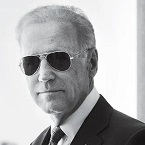Mr. Ed
Posts: 88732
Joined: 7/14/2007
From: Minne-so-ta
Status: offline

|
Video on ESPN says
Article on the return:
What was the most important factor in the Big Ten voting to play?
The medical information and resources around COVID-19 improved significantly, especially the availability of rapid-testing programs. Big Ten teams had several outbreaks during the summer, and contact tracing had been a significant obstacle without rapid testing in place. Many wondered how schools such as Rutgers, Northwestern, Illinois and Maryland would ever get around their state restrictions to practice in pads and eventually play. The emergence of several reliable rapid-testing options eased concerns about contact tracing, and increased confidence about having minimal interruptions during the regular season, which can't afford too many bumps if the Big Ten wants to be part of the College Football Playoff.
What happened in the meetings and how was the vote decided?
The return-to-play conversations began in earnest Saturday, with a medical presentation to a steering committee comprised of eight presidents and chancellors. That group served as a buffer, and was impressed enough that it called a full board meeting with all 14 presidents and chancellors Sunday.
The marathon meeting Sunday, which included a three-part presentation from each of the Big Ten's return to competition task force subcommittees, was again focused on the updated medical information, as the league had cited medical reasons for its initial postponement. The medical subcommittee presented at least four new rapid-testing options and how the developments will ease some of the challenges around contact tracing. Presidents and chancellors also heard about the potential football schedule and how it will work with the Big Ten's television agreements. A start date during the weekend of Oct. 17 was discussed before deciding on the weekend of Oct. 24.
Could some Big Ten teams still not play this fall?
All 14 Big Ten teams will attempt to play. The developments around rapid testing have eased concerns of schools in areas with more restrictions around contact and gatherings. Wisconsin last week announced a two-week pause for all football activities, but the break is set to end next week, and athletic director Barry Alvarez and coach Paul Chryst think the team needs only three additional weeks to be ready for competition. Maryland, which paused activities Sept. 3, resumed football practices late last week.
During a news conference Monday, Wisconsin chancellor Rebecca Blank said all of the schools were going to "move together."
"We're all going to play or not if we possibly can," she said. "This isn't going to be a school-by-school thing."
Could the Big Ten be ready in time for the College Football Playoff?
With a late October start date, the Big Ten can still finish its season and crown a champion in time to be considered for a semifinal spot, but it has to be approved by the playoff's management committee. All 10 of the FBS commissioners and Notre Dame athletic director Jack Swarbrick would determine whether the Big Ten can rejoin the CFP. ACC commissioner John Swofford, SEC commissioner Greg Sankey and Big 12 commissioner Bob Bowlsby will carry the most weight in the room, as they will have navigated their leagues through longer schedules. It would be difficult for them to say no, but they probably won't be thrilled with the Big Ten playing a shortened season.
Can players who opted out of Big Ten season come back?
If a player has opted out for the season, but has not hired an agent, that player is still eligible and can return. The NCAA and conferences have made it clear that players can opt out without any repercussions to their eligibility and to their scholarship. If a player decides to declare for the draft and hires an agent, however, is where it gets tricky. A student-athlete who hires an agent is technically ruled ineligible by the NCAA.
There is an opportunity for the student-athlete to regain eligibility, but it is on a case-by-case scenario. Depending on what was exchanged and what the details are with the athlete and the agent, the student-athlete and his school can try to go through the Student-Athlete Reinstatement process to gain eligibility back for this season. Because this is a unique scenario, there could be exceptions made, but the NCAA has not announced any specific rule changes or adaptations given the Big Ten's situation as of now.
_____________________________
Escape while you can!
|

 Printable Version
Printable Version















 New Messages
New Messages No New Messages
No New Messages Hot Topic w/ New Messages
Hot Topic w/ New Messages Hot Topic w/o New Messages
Hot Topic w/o New Messages Locked w/ New Messages
Locked w/ New Messages Locked w/o New Messages
Locked w/o New Messages Post New Thread
Post New Thread